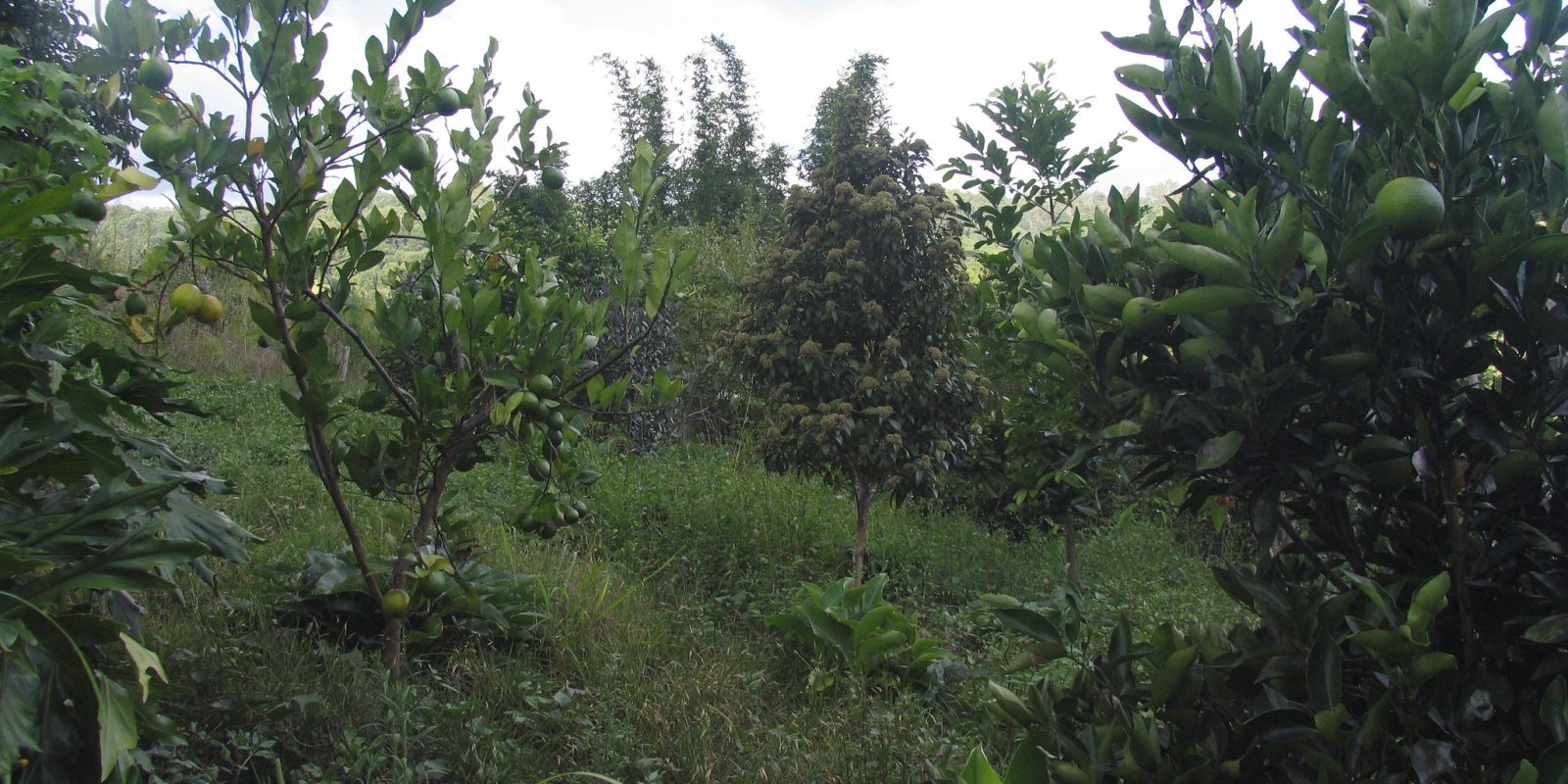Photo / Milkwood
On Aotea we’re constantly exploring ways to live more sustainably and harmoniously with our surroundings. One method, which promises to enhance our self-sufficiency and support local ecosystems, is the establishment of edible forest gardens.
Why an Edible Forest Garden?
Edible forest gardens are designed to mimic natural forests (ngahere), featuring multiple layers of diverse plants that are mostly edible or serve other beneficial purposes. This approach is ideal for Great Barrier Island for several reasons:
- Resilience to Local Conditions: The natural layering of plants provides protection and microclimates, which can reduce the impact of our island’s high winds and varying soil conditions. This design supports growth in less-than-ideal conditions by enabling more fragile plants to thrive under the shelter of taller layers.
- Support for Local Wildlife: Many native bird species find sanctuary in these layered gardens, which offer abundant food and shelter.
- Low Maintenance: For those who only spend part of the year on the island, an edible forest garden is an appealing option because it requires less maintenance than traditional vegetable gardens once established, thriving naturally in our local conditions.
- Sustainability: Transporting food to the island is both costly and environmentally taxing. Growing our own food in a way that encourages biodiversity and minimizes the need for external inputs such as pesticides aligns with our community’s environmental values.
Above: Gardening Australia explores the multi-layered approach of Edible Forest Gardens to create lush, productive planting spaces that mimic a natural forest ecosystem. Video / Hannah Moloney / Gardening Australia, ABC.
Designing Your Edible Forest Garden
An edible forest garden on Aotea should consider the east’s higher winds and saltier air, the west’s lower sunlight, and the general lack of topsoil and prevalence of sandy soil. Here’s how you can structure your garden into different layers:
- Canopy Layer: Choose sturdy, wind-resistant trees like pohutukawa, which are well-suited to the salty breezes of the eastern shores. These trees form the protective upper layer of your forest. For a tropical twist, consider integrating banana plants, which can also serve as an effective windbreak while adding a unique visual and productive element to your garden.
- Low Tree Layer: Incorporate citrus trees, which thrive in less ideal soil conditions if they receive adequate sunlight. Dwarf varieties are particularly suitable for areas with lower light. For those keen on experimenting, try adding other tropical fruits like pineapples in sheltered spots or microclimates within your garden where they can be protected yet receive enough warmth and light.
- Shrub Layer: Utilize Manuka and Kanuka, which are already well-adapted to our conditions. These not only support bee populations but also contribute to soil building and stabilization.
- Herbaceous Layer: Include culinary and medicinal herbs such as kawakawa, known for its distinctive flavor and health benefits. Other herbs like sage, thyme, and lavender can also prosper in sandy soils, particularly when organic matter is added to improve soil structure.
- Ground Cover Layer: Employ plants that can spread across the soil surface, protecting it and retaining moisture. Suitable plants include native ferns and creeping wire vine like Pōhuehue.
- Rhizosphere: Plant root vegetables like kumara and carrots in raised beds to better manage the sandy, nutrient-poor soil conditions prevalent on the island.
- Vertical Layer: Utilize climbers like grapes and passionfruit, which can be trained up trellises or along fences, maximizing the use of vertical space and providing barriers against wind. These vines not only produce food but also add an aesthetic dimension to your ngahere.
Above: Join Gardening Australia as they explore an established food forest where nearly everything you see is good enough to eat. Discover the secrets to creating your own bountiful paradise. Video / Jane Edmanson / Gardening Australia, ABC.
Getting Started
To start your edible forest garden:
- Plan in the Cooler Months: Begin planning your garden during the cooler months, allowing you to plant in the early spring.
- Soil Preparation: Improve soil health by adding compost and other organic matter, especially important for our sandy soils lacking in nutrients.
- Planting: Start with your larger trees and work down through the layers, ensuring each plant has the space it needs to grow.
- Mulching: Apply a layer of mulch to conserve moisture, suppress weeds, and add organic matter back to the soil.
- Watering: Setup additional rainwater harvesting on garden sheds and the like to irrigate your garden sustainably.
By embracing a wilder take with this vegetable garden-orchard hybrid, we should be able to enjoy a productive, and low-maintenance garden that supports our local ecosystem and reduces our environmental footprint. Additionally, a forest garden makes for really interesting meal times, allowing for the combination of diverse ingredients that enrich our meals with every harvest.







